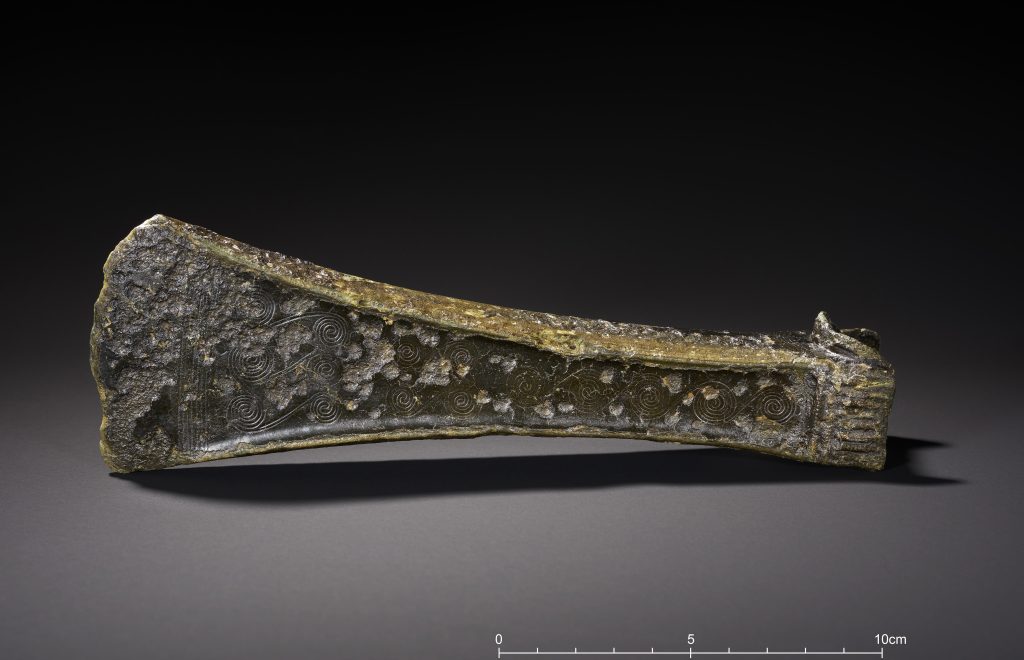Shaft hole axe with decoration. Long and slender axe with conical butt; the edge is curved. The edge is damaged and a hole or cavity is visible. Ribs run from the shaft hole to the edge decorated with two parallel lines. The blade has no other decoration, while the side facets have a row of nine spirals starting in the pattern below the shaft holes. There are groups of transverse parallel lines interspersed with vertical lines between the shaft holes, and there is a similar pattern of horizontal and vertical lines below the shaft hole. The neck has two sections of intersecting lines, separated by transverse parallel lines, and there are transverse lines below the collar. There are two ribs decorated with vertical parallel lines below the neck collar, and on top there are vertical and horizontal lines and two rows of triangles. The conical butt has horizontal and striped lines, and in the middle there is a small pin, which has horizontal and vertical lines. The shaft hole is somewhat damaged, and ends in ribs decorated with oblique lines. The upper part of the hole has striped lines, while the lower part has none. The brown patina has partially dissolved. Length: 24.5 cm Width: 6.3 cm above the edge Weight: 961 g
Photo: Adnan Icagic © University Museum in Bergen, CC BY-SA 4.0
Location:
Lunde, Vindafjord (formerly Ølen), Rogaland
Context:
Found in a water spring, «Slettakjelda», near a landslide, where two other axes were also found B10300/a-b during work at the water spring. The ax was found during the completion of a water pipe. It is likely that the three axes were laid down together, although this cannot be determined.
Date:
Early Bronze Age period 2





